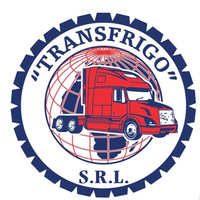
“TRANSFRIGO” SRL offers services for the delivery of cargoes demanding a temperature mode, from the countries of Europe and CIS. Refrigerators have heating, cooling and deep freezing systems.
We know how to ensure the high quality delivery of different special regime loads, in optimal conditions for you.
Transport of cargo with special thermal regime – represents the delivery of easily perishable goods that require special transport conditions.
In this case, the carrier must observe the required temperature in the loading compartment and monitor the condition of the goods transported along the route.
Temperature support from +25 to – 25⁰ С. Cargo volume up to 86 cubic metres. Weight of transported cargo up to 21 tons. 33 Euro pallets.
Trailer dimensions:
Length -13. 60 meters; width -2. 4 meters , height- 2. 5 meters.
The time for transporting perishable cargoes is limited and strictly regulated. Moreover, during transportation, should be met special health requirements and standards (mostly supporting the temperature mode) for the transport of such products. Strict rules of transportation must be respected and when transporting chemical products (especially for the transport of dangerous goods).
“TRANSFRIGO” SRL transports:
- vegetables, fruits, mushrooms;
- canned meat and meat products;
- dairy products;
- chocolate and confectionery products;
- fish and seafood;
- plants and flowers;
- medicines;
- chemical products, including “dangerous goods”.
Temperature terms of carriage are agreed with the client.
All the vehicles have CMR insurance, and further, we can insure your cargo at your request.
Road transport of dangerous goods is one of the key areas of TRANSFRIGO. The company recruits certified specialists, using its own fleet for such transports. Goods in grades 1-9 are imported / exported by car from / to CIS countries and Europe.
Road transport of dangerous goods has a number of organizational aspects (routes, types of transport) and documentation (survey, license, coordination).
Class 1 – explosive materials and objects;
Class 2 – compressed gases, liquefied and dissolved under pressure;
Class 3 – flammable liquids;
Class 4 – highly flammable substances, which can ignite from sparks, friction, etc.
Class 5 – oxidizing substances, which in themselves are not dangerous, but when exposed to certain factors can ignite;
Class 6- poisonous and infectious substances that can cause poisoning or death;
Class 7 – radioactive materials;
Class 8 – corrosive substances, which coming into contact with mucous tissues can cause burns and their destruction;
Class 9 – other dangerous substances.

